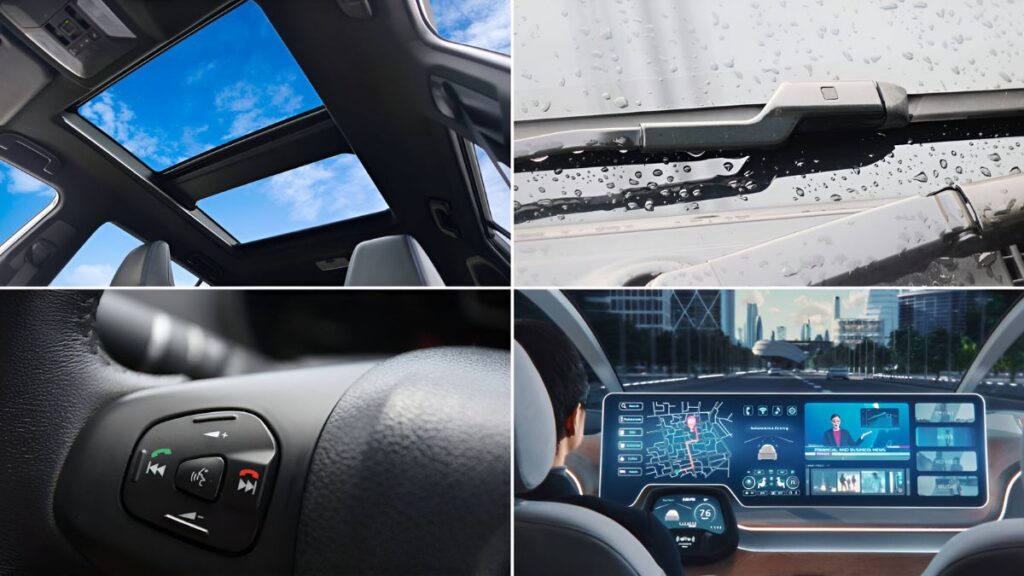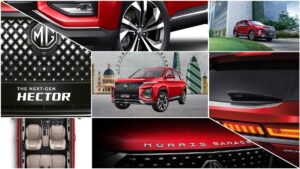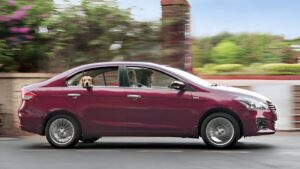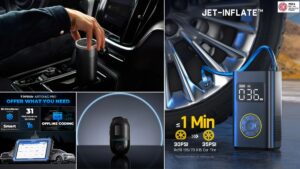Explained: Why These 5 Modern Car Features Are a Complete Waste of Money

Car manufacturers are constantly innovating to outshine competitors and attract buyers with advanced features. However, some of these additions not only add to the cost but also serve little to no real purpose. Instead of spending on gimmicky tech, automakers could focus on enhancing safety, performance, and efficiency. Here are five modern car features that are more of a waste than a benefit.
1. Sunroof – A Risky Attraction
A sunroof is one of the most sought-after features among Indian car buyers, often seen as a symbol of luxury. While it does offer a bit of ventilation and natural light, its practical benefits are limited. Instead, many car owners misuse it in a dangerous way—allowing children to stand through the open sunroof while the vehicle is in motion. This poses a serious safety hazard, as sudden braking or an accident could result in fatal injuries.
Moreover, sunroofs reduce a car’s structural integrity by adding a hole in the roof, which can compromise safety in case of a rollover. They also contribute to increased cabin temperature, forcing the air conditioning system to work harder, which in turn affects fuel efficiency. Additionally, in countries with extreme weather conditions like India, a sunroof becomes impractical due to excessive heat in summer and the risk of leakage during heavy monsoons.
Even prominent automotive experts have raised concerns about the sunroof trend. Notably, automotive content creator Gagan Choudhary shared a video highlighting how sunroofs are not just wasteful but outright dangerous. Given the risks associated with their misuse, there have been growing discussions about potential government regulations to restrict or ban sunroofs in cars.
2. Oversized Touchscreen Infotainment Systems
Infotainment systems in cars have evolved significantly, but not always for the better. Earlier, vehicles were equipped with simple music systems where drivers could play CDs, plug in a USB drive, or connect their phones via Bluetooth to enjoy music. However, today’s cars feature massive touchscreen systems that resemble tablet computers, complete with app integrations like WhatsApp notifications, online navigation, and voice assistants.
The problem? These large screens are a major distraction for drivers. Unlike physical buttons, which can be operated by feel, touchscreens require the driver to take their eyes off the road to adjust settings. Whether it’s changing the air conditioning temperature, increasing the volume, or switching tracks, touchscreen interfaces demand more attention, increasing the risk of accidents.
Another issue is that while these screens can display media content, they cannot be used for videos or movies while driving due to safety regulations. This defeats the purpose of having a giant screen when the same content can be viewed more comfortably at home.
Some carmakers have even introduced rotating screens, adding another unnecessary layer of complexity. While these systems may impress friends and passengers, they offer little practical value. Ultimately, traditional physical buttons are far safer and more convenient for in-car controls than large, distracting touchscreens.
3. Rain-Sensing Wipers That Work When They Shouldn’t
Rain-sensing wipers sound like a smart innovation, automatically detecting rain and activating the wipers accordingly. However, in real-world usage, these systems often malfunction. Many drivers experience wipers turning on unexpectedly even when there is no rain, such as when dust or insects land on the windshield. This can cause unnecessary scratches on the glass, reducing visibility and requiring costly repairs.
Conversely, during heavy rain, these wipers frequently fail to adjust their speed properly. Drivers often find themselves having to manually override the system to ensure proper visibility. This makes the feature unreliable, as manual control is still required in many situations.
In countries where weather conditions are more predictable and rain falls in consistent patterns, rain-sensing wipers may be effective. However, in India, where dust accumulation and unpredictable rain showers are common, a simple manual wiper control remains a more reliable and cost-effective solution.
4. Voice Commands and Personal Assistants
Modern cars are increasingly being marketed with voice command features and personal assistants that allow drivers to control various functions using voice inputs. In theory, this should make driving safer by reducing the need to press buttons or interact with the infotainment system manually. However, in practice, voice commands often prove to be frustrating and ineffective.
Firstly, voice assistants struggle to recognize commands in noisy environments. With honking traffic, engine noise, and passengers talking, the system often misinterprets words or fails to respond at all. This forces drivers to repeat commands multiple times, which is more distracting than simply pressing a button.
Secondly, the system may not recognize regional accents or different pronunciations, leading to errors in execution. Many users find it far easier and quicker to manually adjust the AC, switch songs, or change driving modes rather than relying on a faulty voice command system.
Another major drawback is the added cost. The money spent on integrating voice control systems could have been used for more practical features like a turbocharger, better suspension, or improved safety components. Instead, manufacturers continue to market voice assistants as a futuristic necessity, when in reality, most drivers rarely use them after the initial excitement wears off.
5. Cruise Control and ADAS – Useless on Indian Roads
Cruise control, whether standard or adaptive, is a highly valued feature in countries with well-disciplined traffic and open highways. However, in Indian road conditions, cruise control is often more of a hindrance than a convenience.
- In city traffic, where frequent acceleration and braking are necessary, cruise control is completely useless. Drivers constantly have to take control to avoid obstacles, lane changers, or unexpected slowdowns.
- On expressways, while cruise control could be used, the inconsistency in vehicle movement makes it unreliable. Unlike Western countries, Indian highways often have unpredictable traffic, with slow-moving vehicles, erratic lane-changing, and even pedestrians or animals crossing unexpectedly.
- Adaptive cruise control, which adjusts speed based on surrounding vehicles, is even more problematic, as it relies on the assumption that cars maintain predictable lane discipline—something rarely seen on Indian roads.
Similarly, Advanced Driver Assistance Systems (ADAS), which include features like lane-keeping assist and collision detection, struggle to function properly in India. Most roads lack proper lane markings, making it difficult for the system to detect lanes. Additionally, randomly parked vehicles, two-wheelers cutting across, and road construction zones can trigger false alerts, making ADAS more of a nuisance than a helpful feature.
While these technologies may work well in developed nations with well-maintained roads, they are not yet suited for India’s dynamic driving conditions. The money spent on these systems could be better allocated to improving braking performance, road grip, and structural safety, which would have a more tangible impact on driver and passenger safety.
The Final Word
Car manufacturers continue to introduce advanced features to make vehicles look more high-tech and premium. However, not all of these additions enhance the driving experience. Some, like sunroofs and massive touchscreens, are more about aesthetics than utility, while others, like rain-sensing wipers and voice assistants, fail in real-world conditions. And when it comes to cruise control and ADAS, Indian roads simply aren’t ready for them yet.
Instead of paying for gimmicks that look good on paper but don’t work in practice, buyers should focus on real performance, safety, and long-term reliability when choosing a car. After all, a great car is not about how many features it has, but how well it performs in everyday driving.







